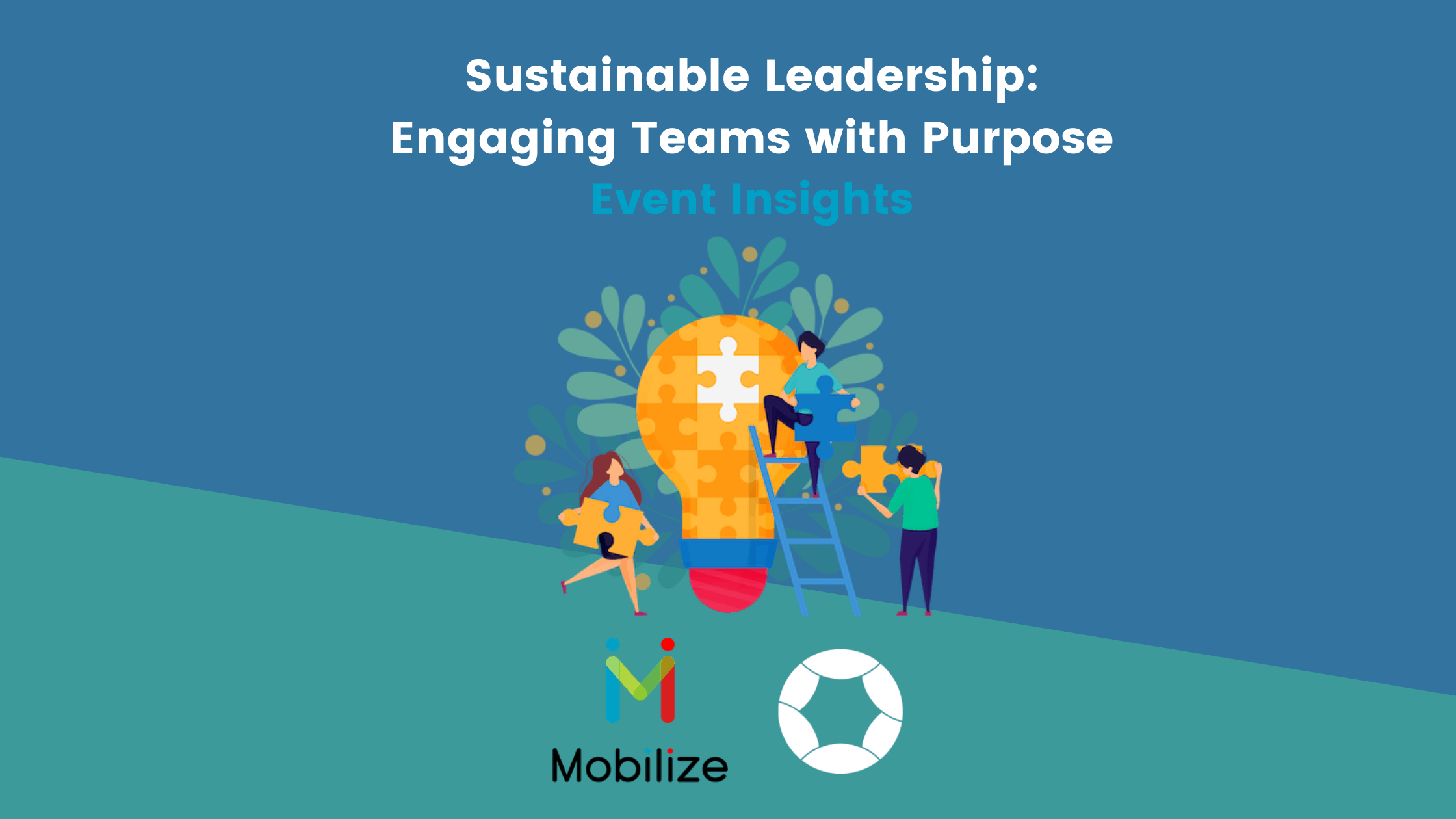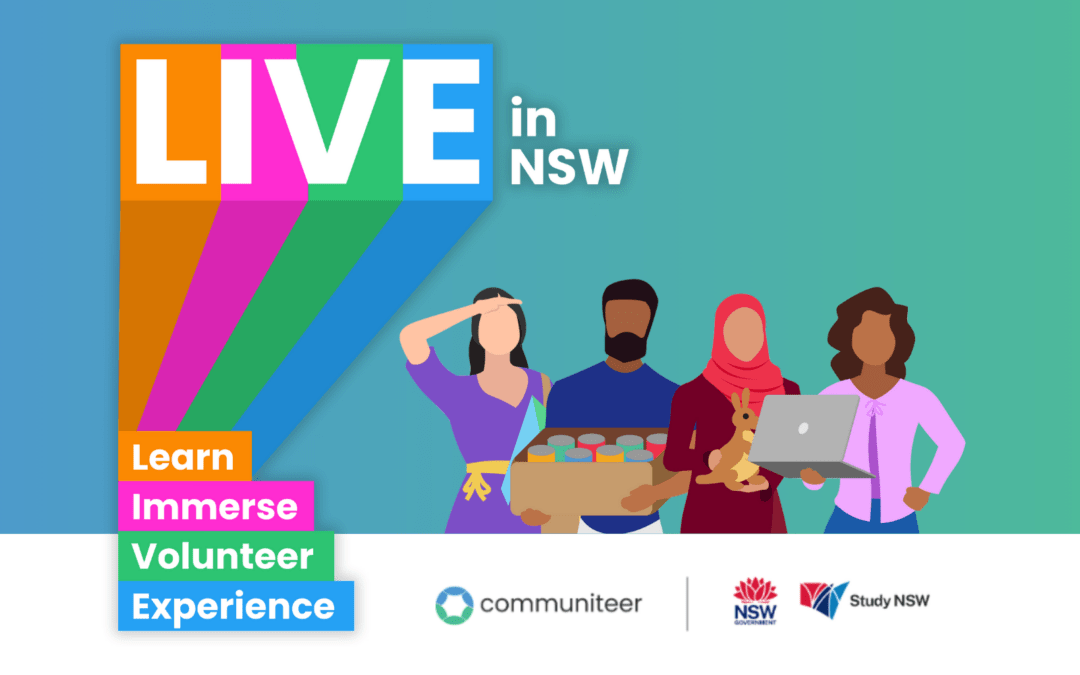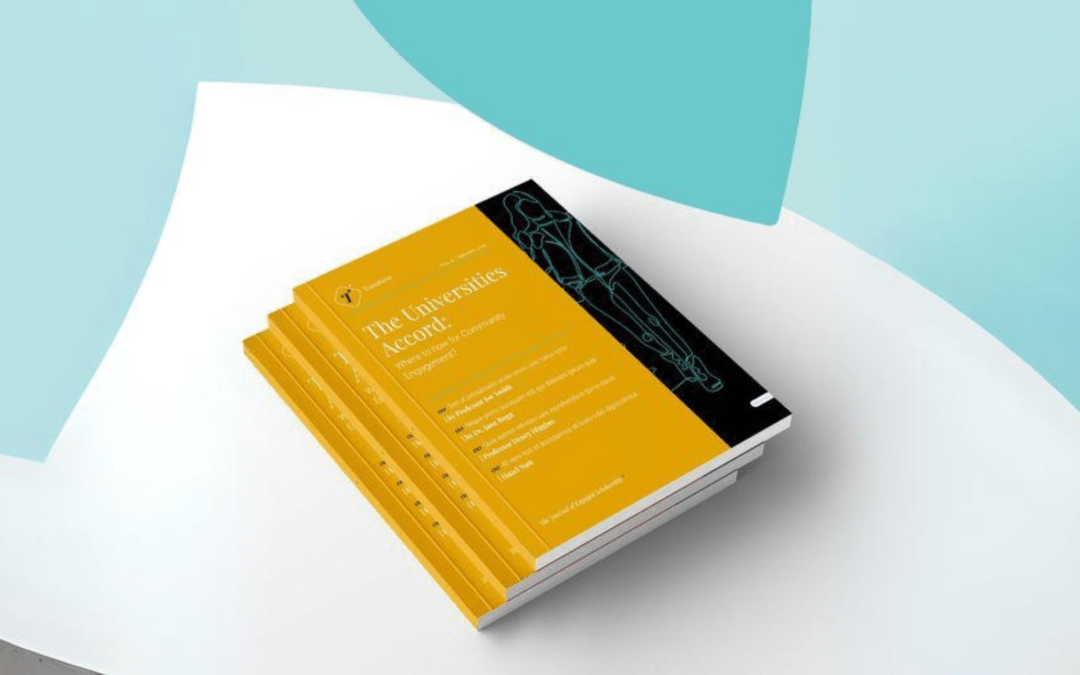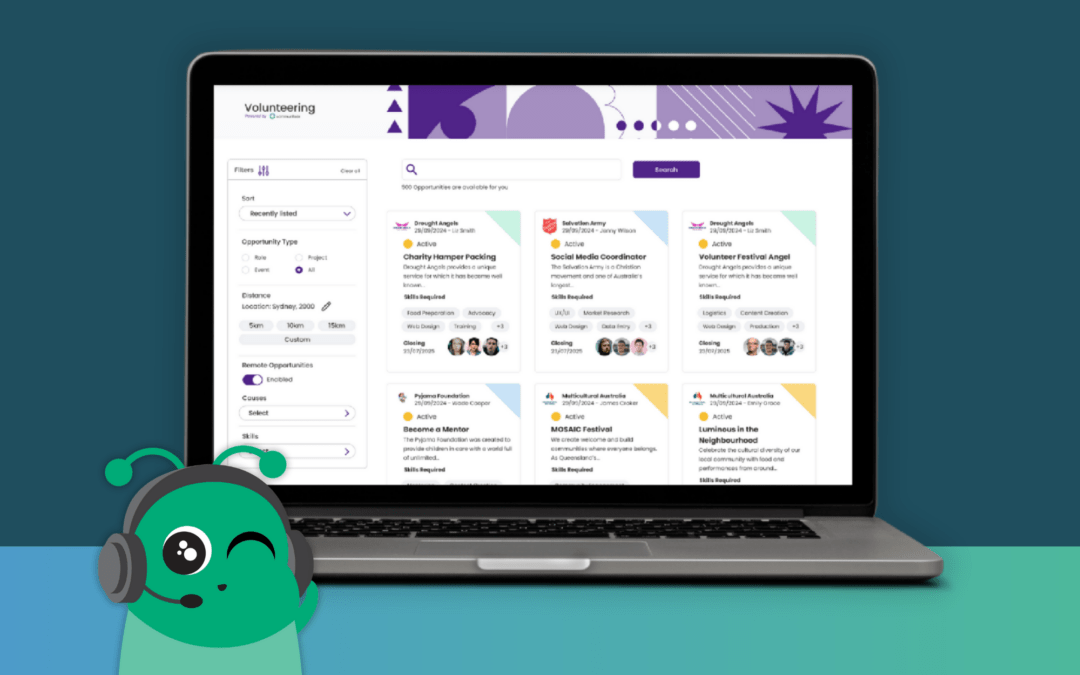Our event volunteering partner Mobilize also joined us for the first event in our Sustainable Leadership Series: Engaging Teams with Purpose!
In this series, we will share stories and case studies of how the worlds of For-Profit and For-Purpose have been combined to motivate, engage, and mobilise corporate teams.
Kicking off our series was our event, Engaging Teams with Purpose, where we were lucky enough to have our panel of experts:
Rebecca Harris, APAC Manager at SAGE Foundation
Richard Duncan, Co-founder at Team Building with Purpose
Terry Haayema, Senior Agile Coach at Commonwealth Bank Australia

Here are some learnings about engaging teams with purpose:
1. Event volunteering breaks down barriers and helps build teams quickly
Let’s admit it; natural barriers exist in the corporate setting, but when you’re event volunteering, your mind isn’t focused on each other. Rather, you’re focussing on the same meaningful purpose. For this reason, bringing groups of people together for an event volunteering opportunity quickly removes predisposed concepts about each other and pre-existing hierarchies.
And this collaboration can then be reflected in the workplace. Rebecca recalls that after an event volunteering opportunity, she saw a group of colleagues, who had never spoken to each other before, suddenly chatting to each other in an elevator. That just goes to show that event volunteering brings people together.
2. Event volunteering gives you more in return than what you’ve given
Volunteering isn’t just about giving back to a community. You’re guaranteed to get more in return. Your team can utilise event volunteering as a learning and development opportunity by fulfilling skilled-volunteering positions. This also enables mentoring & leadership opportunities for senior or upcoming members of the organisation.
You may also receive hidden benefits to your team’s well-being. Terry Haayema, Senior Agile Coach at Commonwealth Bank Australia, recalls their staff members’ number of sick days reduced to zero after volunteering. Why? Because stress creates illnesses, and event volunteering in a team creates connections.
Published in the Shortlister Wellness Report:
- In 2020 clients prioritized wellness as a business objective more than they did in the previous year.
- Consultants have seen an increase in companies implementing third-party wellness programs, from 49% in 2019 to 61% in 2020.
- The popularity of centralized wellness platforms has increased in each wellness prospectus, from 31% in 2019 to 38% in 2020.
- There was a decrease in clients implementing outcomes-based wellness programs, from 61% in 2019 to 51% in 2020.
3. It’s important to get to know the people within your organisation and what motivates them
If you’re reading this, you’re probably assuming that people want to volunteer. But what about those who don’t? They might care about their families more, or their careers. But the panellists reassured this: once you start getting to know what they care about, there is bound to be something that motivates them to give back.
Rebecca recalls her previous mistake of making too many assumptions about what she thought was exciting for her team. In reality, the things that excite one person may surprise another. Terry also recalls making the same mistake while he was working with Jawun, where CBA worked with Indigenous communities.
Richard also echoes this – his organisation went from 8% of volunteers to 97% after learning about how they want to give back. The remaining 3% was because they were ill, not because they were too busy.
4. It’s also important to customise event volunteering
While it’s important to understand what motivates people to give back, it’s also important to not have the one-size-fits-all approach. Richard remarks this is why some not-for-profits struggle to get volunteers – because they present their products and services with a “take it or leave it” attitude.
This is why businesses need to be more supportive of their community partners, and this can be done by shifting the burden and including organisations within their giving programs. Utilising the interests of volunteers only make for more productive givers and happier communities.
5. Don’t just focus on the numbers, focus on the stories too
It’s natural for us to want to focus on the numbers – how much money we raised, how many days or hours we volunteered etc. However, sometimes strength lies in focussing on the stories and the experiences. Of course, you can’t capture every story, but you should drill down on the impacts to the individuals to encourage others they will have a similar experience.
Not-for-Profits have incredibly moving stories to tell. This would have a significant presence in rallying your teams to take action.
6. Lack of capacity isn’t the biggest blocker, lack of motivation is
All panellists mentioned the biggest blocker we hear also: lack of corporate volunteer capacity due to their day job. But they also know that once you start talking to people, figuring out what motivates them to give back, and allowing them to give back given their constraints, people will give back more and more. It’s all about priorities and choices, so your challenge is to make event volunteering a priority for your employees.
If you think about the times people are most productive, it’s normally when they love what they are doing and are happy. According to IncentFit, it’s the same with work. If you provide a way for your employees to engage in activities or events that make them happier, overall productivity will increase.
7. Approach not-for-profits as a partnership
It’s important to not approach the charity like you’re the knight in shining armour. Rather, it should be a levelled playing field. This also allows a deeper emotional connection between colleagues and the not-for-profits.
Don’t underestimate what a charity and the event volunteering opportunity that I have on offer can do for your people. If they understand what you’re hoping for they may be able to hone in on that, tailor where possible and customise where necessary.
8. Event volunteering can reduce process lost
Often our work involves handing what we’ve done over to another person, with a clear split of accountability. That person then hands the work to someone else. And the list goes on. But because event volunteering requires you to work together as a team, you can reduce this handover time and get work done quicker.
Plus you can get a better appreciation of what your colleagues are capable of and how they work outside of their usual process and tasks. This can improve collaboration levels when the team return to work through greater levels of respect, connection and trust.
9. The statistics show that volunteering is a win-win-win situation for all involved
Volunteering benefits everybody! It benefits the company, its employees, the not-for-profit, their employees, and also, the beneficiaries of the not-for-profits. And the statistics show that too!
Here are some of the statistics and resources our panellists mention:
- Kindness Matters Guide by Mental Health Foundation UK, which showed us some of the key benefits of helping others, including: feeling good, creating a sense of belonging and reduces isolation, helping to keep things in perspective whilst making the world a better place.
- Sage Foundation conducted a survey on their employees, and found that 91% of them said volunteering contributed to their happiness.
- According to Gallup back in 2018, highly engaged teams showed 21% greater profitability. 96% of employees believed empathy is an important way to retain employees. In the US, disengaged employees cost companies up to 500 billion dollars a year, according to a joint study by companies such as Deloitte. 89% of workers at companies that support wellbeing initiatives are likely to recommend their company as a good place to work. Lastly, 87% of employees expect their employers to support them in balancing between work and personal commitments. Check out the full report here!
Team building activities allow colleagues to connect and bond outside of their day-to-day tasks, which is even more enjoyable and meaningful when it’s for a higher purpose of helping a charity.
That is why we’ve partnered with Mobilize – Team Building with Purpose. They have taken team building activities face-to-face and online to a whole new level. Check out our joint services here.
Watch the event recording below to learn engaging teams with purpose!




